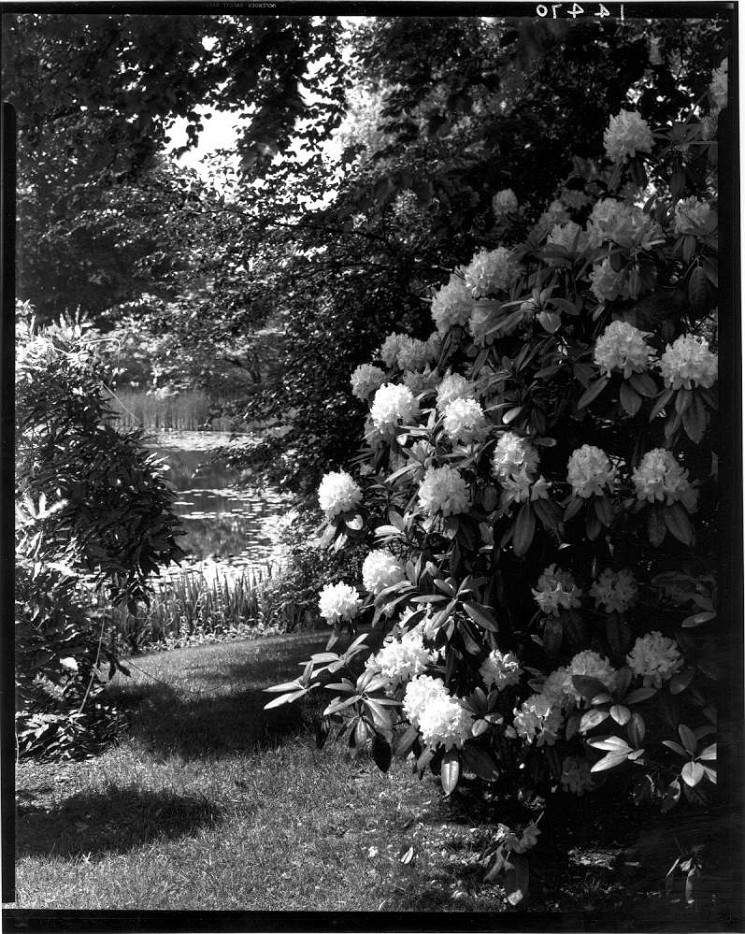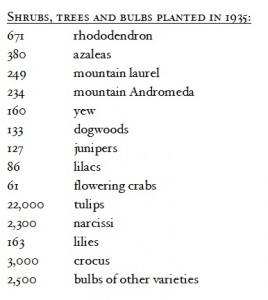Oakes Ames Reinterprets Horticulture Mission

As president of Mount Auburn from 1934 – 1963 and 1967 – 1968, Oakes Ames made horticulture a high priority at the Cemetery once again. Under Ames the horticulture infrastructure was greatly expanded in the 1930s with six new greenhouses and the acquisition of nursery land in Lincoln, Massachusetts to grow plants for the Cemetery. Additionally, he initiated a landscape gardening and florist service and encouraged proprietors to purchase flowers for holidays and anniversaries and to consult with cemetery staff on lot plantings.
 Ames preferred “naturalistic plantings of long-lived and slow-growing shrubs” (Annual Report, 1936), like rhododendrons and yews. He suggested that these be accented with annuals such as ageratum, begonias, geraniums, and snapdragons and that “by judicious selection of such flowers and the use of pansies and bulbs, continuous bloom in attractive combinations may be had for the entire season” (Annual Report 1936). Additionally, evergreens provided year-round visual interest. His landscape vision rejected extensive use of bedding plants in favor of more natural groupings and subtle use of color, texture and form. Gone were the Victorian era preferences of exotic species and high-maintenance, formal gardens.
Ames preferred “naturalistic plantings of long-lived and slow-growing shrubs” (Annual Report, 1936), like rhododendrons and yews. He suggested that these be accented with annuals such as ageratum, begonias, geraniums, and snapdragons and that “by judicious selection of such flowers and the use of pansies and bulbs, continuous bloom in attractive combinations may be had for the entire season” (Annual Report 1936). Additionally, evergreens provided year-round visual interest. His landscape vision rejected extensive use of bedding plants in favor of more natural groupings and subtle use of color, texture and form. Gone were the Victorian era preferences of exotic species and high-maintenance, formal gardens.
Ames’ greatest horticultural contribution was to re-establish the goal of horticultural diversity which had been associated with the experimental garden and which continues to guide plantings today.
Feature photo: “Rhododendrons in Flower” by Arthur C. Haskell
Text based on: Berg, Shary Page. Mount Auburn Cemetery Master Plan Volume 2 (1993).
Leave a Reply